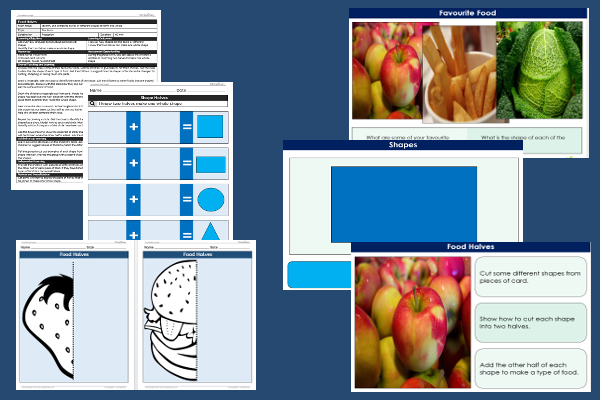Home > Foundation Stage > Numeracy > Number > Fractions > Halving Things
Food Halves

This numeracy teaching pack for the Foundation Stage gets the children to explore how to identify and complete halves of some different shaped foods that can be found in a family kitchen to form one whole shape.
The class can explain and model how they can show that two unequal parts of a shape are not halves and cannot be reformed to make one whole shape for each type of food.
Download this teaching pack including a lesson plan, classroom activities and an interactive presentation to explore how to identify and complete halves of some different shaped foods that can be found in a family kitchen to form one whole shape
Activities in this teaching pack include a worksheet to identify and record pairs of halves for a range of shapes that can be combined into whole shapes and templates to select and complete the other half of some different shaped foods to form one whole shape.
The interactive presentation gets the children to explore how to identify and complete halves of some different shaped foods to form one whole shape.
This lesson is part of a numeracy scheme of work to get the children to explain and model how to find and record the halves of some of the different objects that can be used at home and in school. There are teaching activities for shared learning, differentiated worksheets to support independent learning and interactive presentations to introduce concepts and key skills.
-

Garden Measurements
Practise using vocabulary words and non-standard measurements to find and compare the length of different things that can found in a garden
-

Family Holiday
Identify and recount events and experiences to describe what happened when on holiday at the seaside using sentences in the past tense
-

Money Shopping
Investigate and model some of the number skills that need to be used when working with money on a shopping trip
-

Supporting Others
Explore how to build strong and positive relationships with other pupils at school and family members at home through different situations and scenarios
